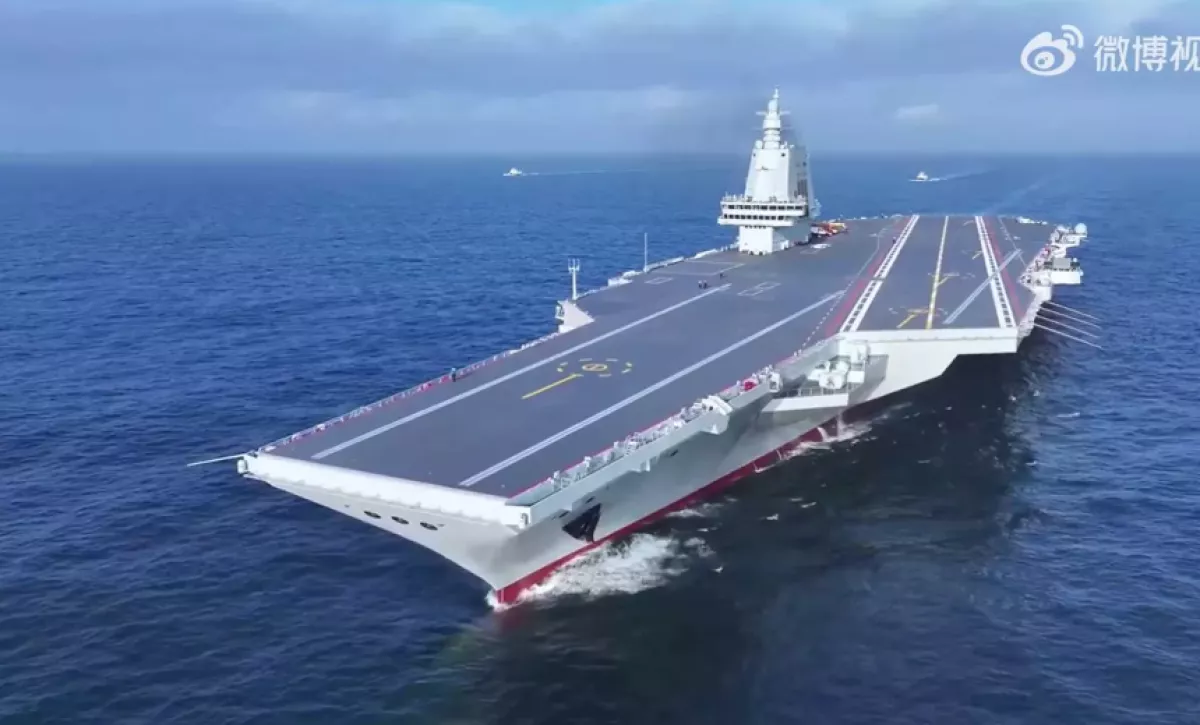First lunch of China’s J-35 stealth fighter signals major leap in carrier warfare PHOTO
China’s newest carrier-based stealth fighter, the Shenyang J-35, has successfully conducted its first launch using an electromagnetic catapult (EMALS) from the deck of the country’s latest aircraft carrier, Fujian.
The flight, reportedly carried out in March, could represent a major milestone in the evolution of China's naval aviation capabilities, Caliber.Az reports, citing foreign media.
Until now, the Chinese Navy has primarily operated the fourth-generation J-15 carrier fighter, an upgraded derivative of the Soviet-designed Su-27 (Su-33). However, the introduction of the J-35 — featuring stealth characteristics absent from the J-15 — marks a significant technological advancement, offering China enhanced operational flexibility and survivability in contested environments.
If the trials are confirmed successful, China could soon field carrier-based fighters with capabilities approaching those of the US Navy’s F-35C Lightning II, thereby narrowing the qualitative gap between the two military powers.

The Fujian itself represents a major leap forward in China's carrier program. Displacing between 80,000 and 85,000 tons, it is the largest and most sophisticated vessel of its kind ever built by China, surpassing the earlier Liaoning and Shandong carriers. Equipped with three electromagnetic catapults powered by an integrated electric propulsion system, the Fujian can achieve up to 30% greater launch efficiency than traditional steam catapults used on older US and Chinese carriers.
Although not yet fully operational, the Fujian’s EMALS system is capable of launching heavier and more advanced aircraft, including the J-35, the KJ-600 early warning aircraft, and the GJ-11 stealth drone. Combined with China’s modern Type 055 destroyers, capable of deploying hypersonic missiles, the Fujian is central to China's ambitions of forming a carrier strike group comparable to that of the United States.
The J-35’s development is seen as a direct response to the US F-35C program, long regarded as the benchmark for stealth carrier aviation. The operational deployment of a Chinese stealth fighter would complicate US and allied defense planning, requiring a reassessment of China’s ability to project power, challenge sea control, and enforce anti-access/area denial (A2/AD) strategies across vital maritime zones such as the South China Sea, the East China Sea, and potentially deeper into the Indian Ocean.

Reports suggest that once fully integrated, the Fujian could operate up to 48 J-35 aircraft. Meanwhile, China’s older carriers, Liaoning and Shandong, could be retrofitted to carry approximately 24 J-35s each, alongside electronic warfare variants of the J-15. This would potentially allow the Chinese Navy to deploy nearly 100 carrier-based stealth fighters by 2030 — a development that could significantly alter the regional military balance.
However, China still faces challenges in areas critical to high-end carrier operations, including joint force integration, training pilots for stealth carrier aviation, and sustaining the complex maintenance requirements of stealth coatings and advanced avionics. Even so, the progress signals China’s accelerating efforts to build a world-class navy capable of rivalling the United States in global power projection.
By Tamilla Hasanova








